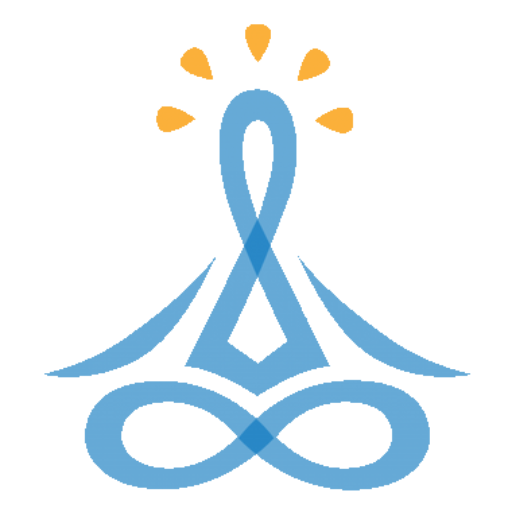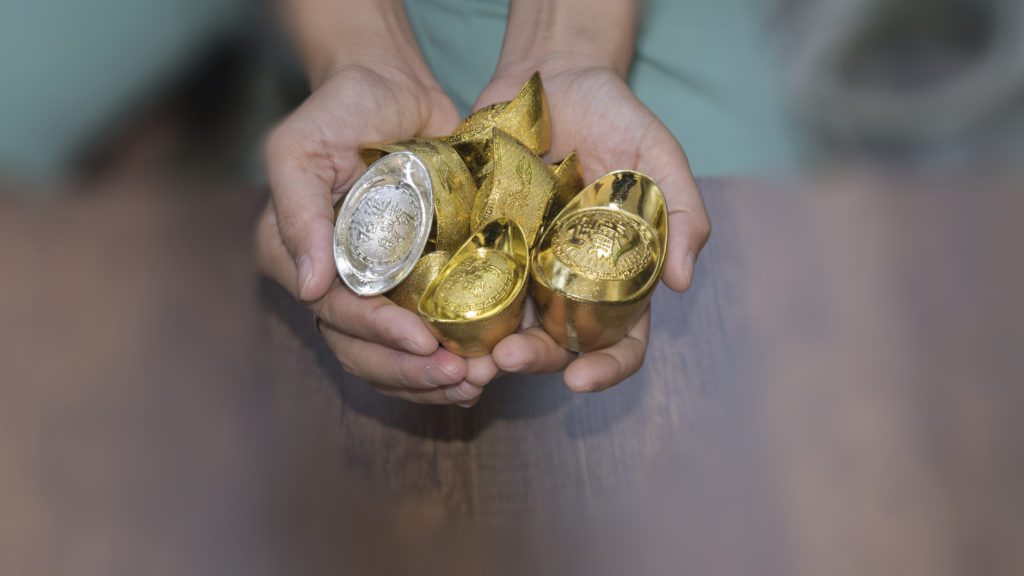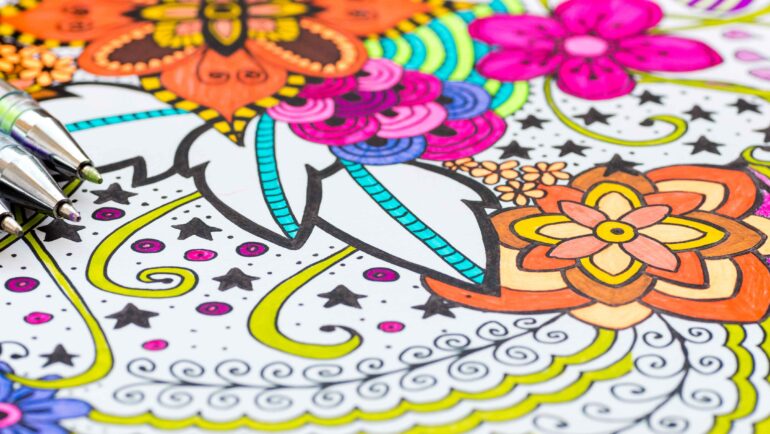Our metal element gives us our ability to create boundaries, and to let go of people, places and things that make us feel less than. What do you know about your metal element? Wanderingyogilee explores this, the 3rd element of the Wu-
Xing
You notice a falling in temperature, the season becomes well… unseasonal. If you live in a country that has four seasons, this is known as Autumn. Leaves begin to change colour, you start to look for the winter woollies.
This is the season where we explore our inner nature. Some of us begin to hibernate, to reflect. This is the season to find the emotional treasures hidden deep in ourselves
I reflected on this as I wrote in a journal recently.
Being told to let go, or relax, often said in a slightly patronizing voice, is guaranteed to irritate me. I think I have done enough personal development to know which bits I can let go of and which bits I should keep. When I am irritated by someone saying ‘let go’, I often take the opportunity to check in – how do I let go? And when should I? I have a particular client, who resists any notion that change is possible, and potentially limitless. Yoga is good for ‘just a stretch’, and he wants me to not use the word yoga when we meet. He is abrasive, sometimes I feel deliberately, and seems to enjoy trying to make me ‘bite’, often by denigrating remarks about yogis. I say nothing publicly, but my internal discussion is intense. How do you let go? Do you mean ‘let go’ as in let him go? Because he is not that useful or meaningful in my life? One day he will no longer be my client. Or do I mean ‘let go’ in the Buddhist tradition where we practice ‘leaning in’ to bits that irritate or hurt us to get beyond to compassion for them and us. I think most people mean the former, practicing the latter is very, very hard. This is where my meditation and the breath become all important, to access my inner metal.
The movement of metal energy is downwards. After the uprising yang of Wood and Fire, and the balanced axis of Earth, Metal represents the beginning of yin in the sheng cycle
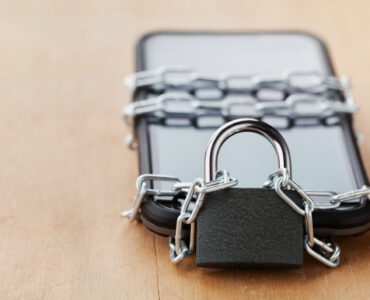
The Metal Element
THE SEASON: AUTUMN
SPIRIT: PO (CORPOREAL) SOUL
COLOUR: WHITE
EMOTION: GRIEF
SOUND: WEEPING
THE YIN/YANG MERIDIANS: LUNG/LARGE INTESTINE
IT IS OFTEN KNOWN AS THE AIR ELEMENT
Metal is valuable – the chinese character for metal is Jin, representing nuggets of gold beneath the earth. The symbol for earth is contained within this chinese character, with an additional line suggesting greater depth, a sloping roof indicating covering or concealing something underneath.
When our metal element is in balance, we have a strong sense of our own self-worth. We are good at cutting to the chase, fighting for what we believe in, standing up to bullies. We also know how to easily move on from things, or people that no longer serve us.
This last bit is hard. Desire and attachment are hardwired into us, as social and survival instincts. The degree to which we manage attachment to others, with becoming too detached, tells us much about our metal element. Compulsions and obsessions are often indicative of a metal balance.

In balance, the metal element gives us the strength to let go of that which we no longer need and to stand up for what we believe in. Out of balance, we can lose sight of our own worth and value (similar to Earth element) WanderingyogileE
The Meridians
The metal element is associated with the Lungs (yin) and Large intestine (yang) meridians. In Western medicine, these are not connected. But in TCM, they are responsible for the letting in and letting go in our body.
LUNG MERIDIAN – BRINGING IN
In TCM, the lungs cover the nose, nasal passage, trachea and lungs. The most important function of the lungs is to inhale the Heavenly Qi. This Qi is combined with the extracted by the spleen to form gathering Qi (Zong Qi). 30% of our post natal Qi comes from air, 70% from food.
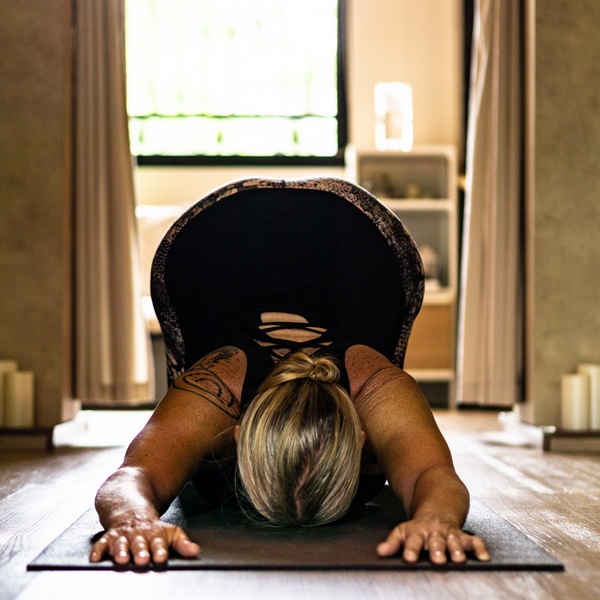
Learning breathwork yogi style helps us gather as much of this air qi as we can. The classic yogi inhale and exhale through the nose is more likely to get us the full 5 litres we are capable of rather than the average 1.5 litres we get through nose/mouth breathing.
Our lung meridian represents the bringing in of the metal element, important for most of us who truly don’t breath enough qi
The lung Qi purpose is to harmonise how to live as a spiritual being in an animal body.
The lungs house the spirit Po, the corporeal soul. Learning to connect our Po gives us greater power of the now. It is the only one of the five spirits the Chinese believe dies with us. Breathwork is a key bridge between this spirit and our animal body.
LARGE INTESTINE MERIDIAN – LETTING GO
In Western medicine, this system has four parts, serum, colon, rectum and anal canal. It conducts waste material from the body, and at the same time, reabsorbs water and minerals. In TCM, the large intestine Qi helps with the descending Lung Qi. The large intestine Qi purpose is to help us learn how to let go.
The large intestine is associated with the emotions of sadness and grief. It can help build immunity as it works as a paired channel to the lung meridian and has a big effect on the flow of Qi and blood in the body.

There are many ways we can balance our metal element, once we know which bit is out of sync. We can use all our maya koshas, mental, physical, emotional, spiritual.
TIPS FOR BALANCING OUR METAL ELEMENT
1. Yogi Breathwork
As we let go, we need to bring in. Get your maximum dose of air qi, and practice yogi nose breath in its many variations daily. Go see a yogi if you want specific tips.
2. Eat Food right in vitamins and minerals
Unfortunately, meat is NOT on the list. Most of our minerals and vitamins come from vegetables and fruits. Eat more please you will notice the difference.
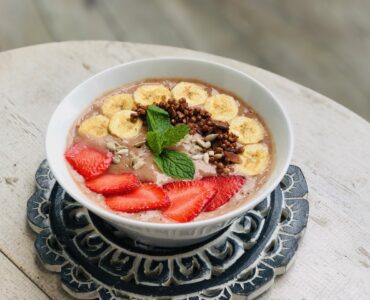
3. Have your feelings, but don’t let them have you
Grief is one of the least understood of emotions. Most of it is hidden in plain view. Coming to peace with grief, crying and loss can be as simple as letting yourself cry when you are sad, get mad when you grieve. Your metal element will protect you if you look after it.
THE ZINK YOGA PRACTICE
I would like to thank Paulie Zink and all his senior teachers, and his students. This is the Wanderingyogilee way from this practice.
No yoga practice is complete without using all five elements of the Wu-Xing. Balance your focus from pose to pose with its yielding element. Start your yoga practice with mother earth poses. Do poses at least twice. If in flow, you don’t have to do both right and left – unless you want to. Smile and enjoy!
Pranayama – inhale/exhale, hands tucked in under your armpits. Then, breath with Acupressure point Zhong Fu (Middle Palace Lung 1).
Middle Palace Lung 1: Zhong Fu is both an entry point and the mu, or alarm, point for the lung meridian. Helps with breathing difficulties such as asthma, bronchial issues. If we are holding onto something, active massage in this area will release the tensions.
Hegu (Joining Valley) – probably the best known pressure point of all time. May know this as good for easing headaches. But its major purpose is to treat any conditions that involve tightening and hanging on, an inability to let go, relax, be free.
- Cat-cow – synchronising of breath and using sounds of each animal changes the effect of the breath
- Reverse Cow – placing the fingers towards the body, leaning away as much as you can
- Toe pose with Garudasana arms, coming off toes and falling into reclining tree, switching arms, try for garudasana legs left and right.
- Swing back up to table top, dog series – down dog, peeing dog male and female, pointer dog.
- Come up to tree pose, swing from side to side, lateral side flexions, then to Metal tree.
- Jump to metal chair, arms straight in front. Quick movement out to the side and then up, straight and strong. 5 breaths in each variation.
- Twisting spider – Hands to ground, jump back legs wide. Move into twisting spider – 4 rotations.
- Full Metal Triangle/ Half/Fire pigeon/Water Pigeon Hold the metal poses for 2 minutes. Try some variations in pigeon, from king pigeon to mermaid.
- Reverse Table Top/Rack, lift up the hips for as high as you can 3 breath hold. Move to rack and hold.
- Caterpillar Metal roll over to one side and bend the legs in and out. Don’t forget to do other side.
- Sphinx and Seal Pose. Water seal to earth seal to metal seal. Hold for 2 minutes.
- One armed lotus pose– Eka Buja Swasistasana, left and right. Aka Buja Padmasana, left and right. Hold for 2 minutes each side. Bhastrika pranayama while you are here. Reverse Savasana.
- Childs Pose, then to Playful Puppy (Annahatasana) hold for 2 minutes.
- Dragon fly then with side flexion (hold for 2 minutes each). Practice breathing into the lung that is open to the sky.
- Shrimp pose then Savasana (Chinese 5 elements pose).
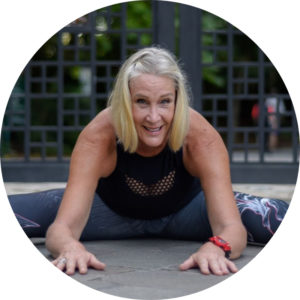
Lee Carsley is the WanderingyogiLee. Teacher of yoga and meditation, she now uses her energy gifts helping you become the most aum-some you can be Follow Lee on Instagram – wanderingyogilee

